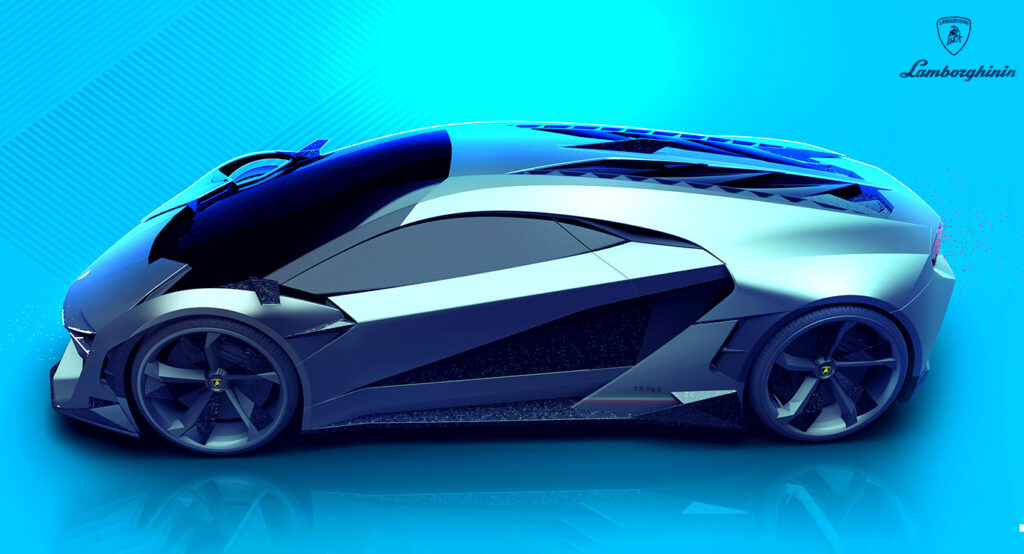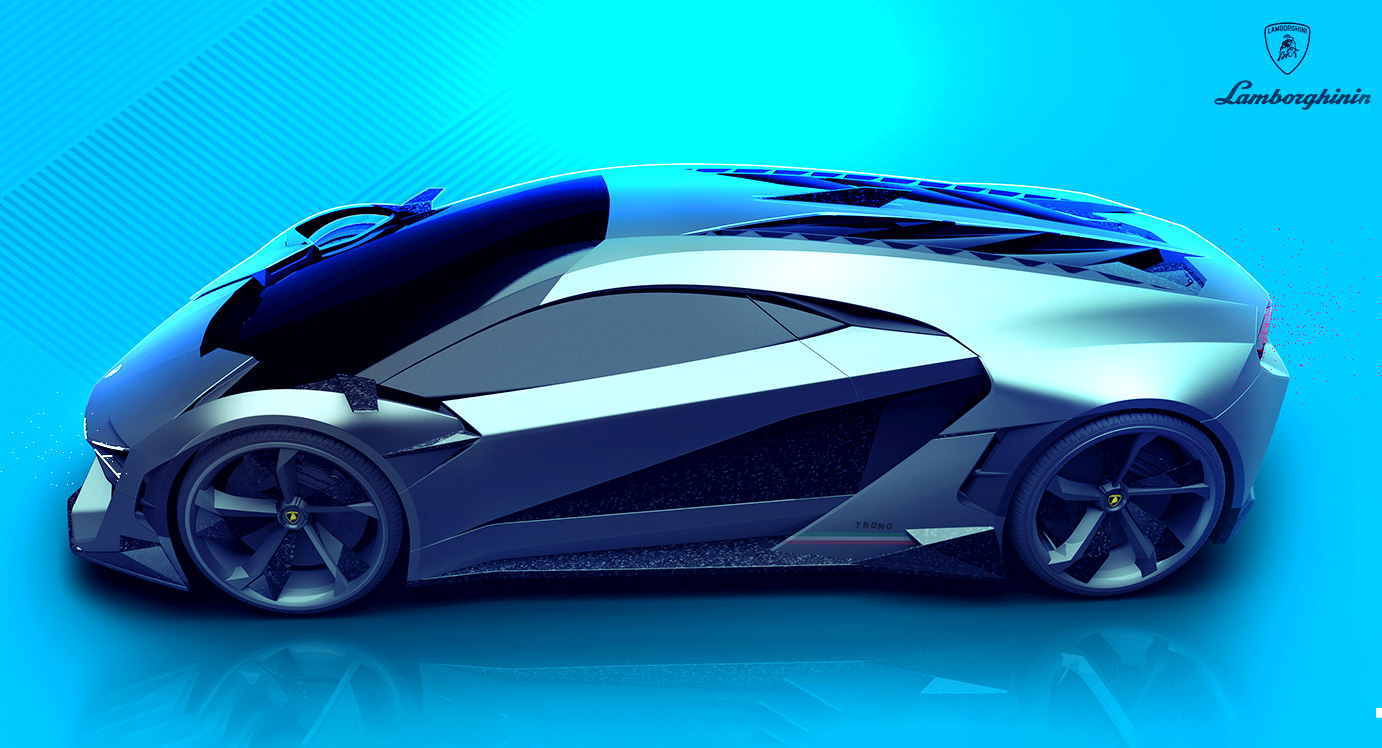This article includes renderings of an independent study for a Huracan replacement called Trono that was designed by Ramandeep Singh, Narendra Singh and Appu Koshy, who are neither related to nor endorsed by Lamborghini.
Lamborghini is in a state of transition as its lineup becomes electrified. In the process, the Huracan is due for replacement and a new report says that the V10 will leave production with it. In place of the NA engine will be a twin-turbocharged hybridized V8 that works in a truly revolutionary way.
Instead of utilizing a conventional boost profile, the V8 will use electrification to boost performance up to 7,000 rpm. At that point, the turbochargers will come online and provide extra power all the way to 10,000 rpm. If true, it could allow the Huracan’s replacement to feel much like a naturally aspirated supercar, at least until the boost kicks in.
The report comes to us from Motortrend where they say that in addition to the turbocharging the new V8 will utilize an axial-flux electric motor. Unlike the large electric motors used on EVs like the Tesla Model S, this “pancake” motor fits between the engine and transmission and acts almost like an electric supercharger.
Read More: How Does The Lamborghini Countach LPI 800-4 Compare To The Sián FKP 37?
Lamborghini is somewhat notorious for bucking the trend of the day. For example, the brand’s first hybrid, the Sian FKP37, uses a supercapacitor instead of a battery to store energy. According to the report, this unique new V8 engine requires enough development capital that Lamborghini is saving cash by updating the Huracan’s platform instead of replacing it altogether.
That’s not too concerning though since the Huracan isn’t really lacking with regard to its chassis. Expect the replacement model to be slightly longer to accommodate the battery packaging. Whether or not it’ll offer any sort of plug-in charging we don’t know just yet. Regardless, it sounds like Lamborghini is working hard to keep weight down and agility up.
The Huracan has proven that Lamborghini knows how to make a competition-spec supercar and we’d hate to see heavy batteries stop that progress. The V10 might be on the way out but it’s served the car, its owners, and even the tuning community quite well. One thing feels certain; turbochargers that are efficient from 7,000-10,000 rpm should be pretty interesting.






